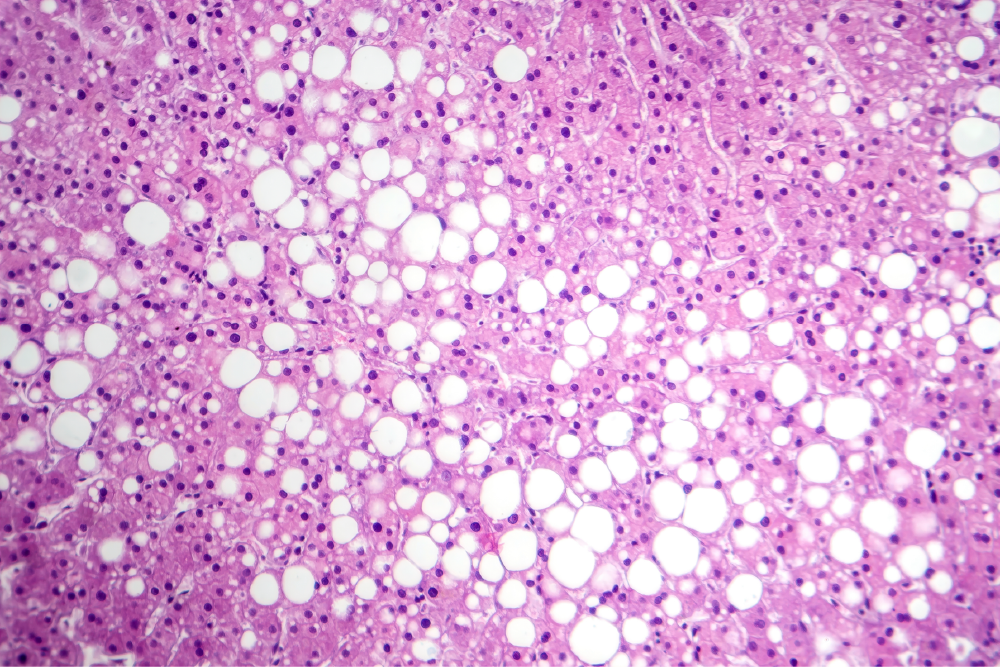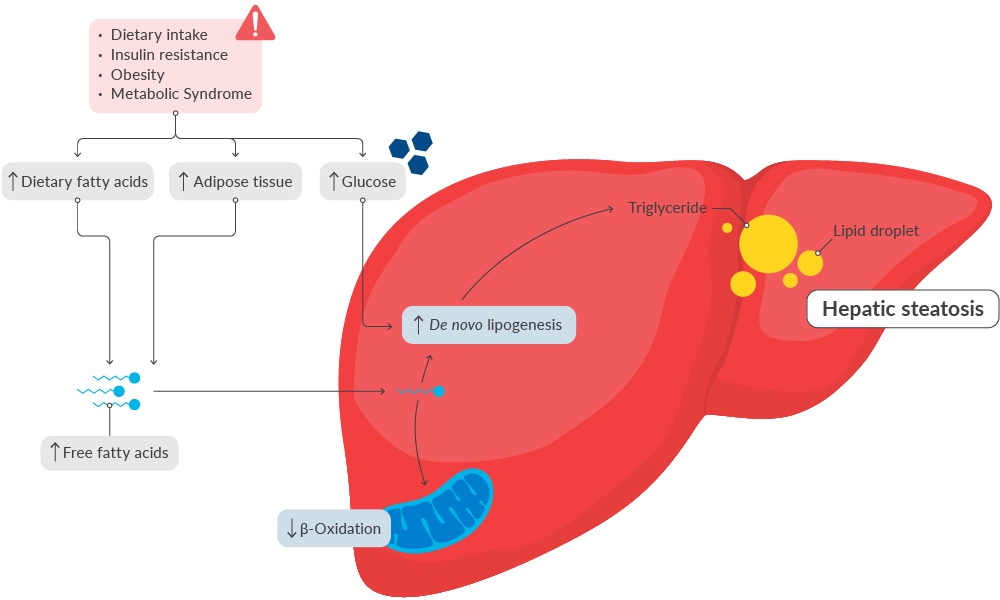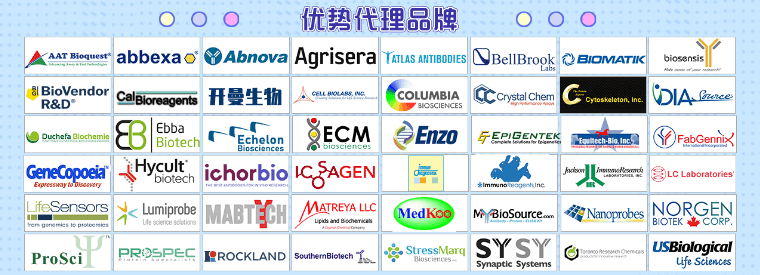本篇主要介绍通过靶向脂肪性肝病 (SLD) 中的代谢因子来推进代谢功能障碍相关脂肪性肝病 (MASLD) 和代谢功能障碍相关脂肪性肝炎 (MASH) 研究的系列文章。在本系列中,每篇文章都涵盖了与脂肪性肝病代谢功能障碍相关的特定领域,为用于研究这些疾病中代谢功能障碍的策略和研究工具提供了指南。
全系列涵盖:
- 推进MASLD和MASH研究:简介
- 推进MASLD和MASH研究:针对新发脂肪生成和胰岛素抵抗
- 推进MASLD和MASH研究:PPAR和FFAR脂肪酸信号通路
- 推进MASLD和MASH研究:LXRs、FXRs和GP-BAR1在代谢调节中的作用
通过探索这些主题,发现支持您研究的产品和资源。
理解MASLD和MASH:简介
代谢功能障碍相关脂肪性肝病 (MASLD),以前称为非酒精性脂肪性肝病 (NAFLD),是一种复杂且异质性的肝脏疾病。1MASLD 的特征是脂质在肝细胞中异常积累,这种情况称为肝脂肪变性。1MASLD 可发展为更严重的形式,称为代谢功能障碍相关肝脂肪性肝炎 (MASH)。在这个阶段,肝脏会经历持续的炎症和细胞损伤。2如果没有阻止或逆转 MASH 进展的有效疗法,MASH 患者有患肝硬化的风险。肝硬化是一种严重的进行性疾病,其特征是广泛的肝纤维化,可能导致肝功能丧失。


MASLD 和 MASH 之间的区别
| MASLD | MASH |
| 代谢功能障碍相关的脂肪性肝 | 代谢功能障碍相关的脂肪性肝炎 |
| 一种轻度的 SLD,在没有肝损伤或炎症的情况下,肝脏中存在脂肪变性。6 | 一种更严重的 SLD 形式,其特征是在存在持续肝脏炎症的情况下脂肪变性。7 |
| 通常为非进展性且相对良性。6 | 可能会发展为更严重的疾病,如肝纤维化和肝硬化。8 |
区分 MASLD 和 MASH 很重要,因为它们具有不同的前景和相关风险。患有 MASH 的个体有患上更严重疾病的风险,例如心血管疾病、癌症、肝硬化和肝功能衰竭。9MASLD 和 MASH 都被认为是可逆的,但当疾病发展为肝硬化时,移植可能是唯一的选择。
对新疗法有迫切的需求
|
全球 30% 的人口受到 MASLD 的影响10 |
MASLD 相关死亡率正在增加10 |
只有一种 FDA 批准的 MASH 疗法11 |
MASLD 是世界上最常见的肝病,估计影响全球 30% 的人口,在某些地区区域患病率超过 40%。10,12MASLD 的患病率在全球范围内不断增加,并且与肥胖和糖尿病发病率的上升相吻合。10因此,MASLD 与各种代谢危险因素密切相关,包括肥胖、血脂异常和胰岛素抵抗/2 型糖尿病。13,14
直到最近,还没有治疗 MASLD 的药物选择,治疗策略侧重于生活方式的改变。2024 年 3 月,美国 FDA 批准 resmetirom 用于治疗 MASH。11
MASLD 标志
肝脂肪变性是 MASLD 和 MASH 等 SLD 的标志(图 1)。它的特征是脂质,尤其是甘油三酯 (TGs) 在肝细胞中以脂滴的形式在细胞内积累。15这种积累是由过量的脂质引起的,这是由于脂肪酸摄取、合成、输出和氧化的不平衡造成的,并且是由许多潜在因素介导的。16

图 1.肝脂肪变性的显微照片显示肝细胞中脂质的积累。
MASLD 发病机制
MASLD 的发生和发展受多种因素的影响,包括遗传和表观遗传、饮食和环境以及代谢因素,这些因素都导致了其复杂性。17顾名思义,MASLD 与肥胖、胰岛素抵抗和糖尿病、血脂异常和代谢综合征等疾病相关的代谢失调密切相关。解决潜在的代谢失调是 MASLD 治疗的关键策略。
MASLD 是由于葡萄糖和脂质代谢改变引起的能量稳态失衡引起的。几种失调导致肝脏中过量脂质的积累,包括从头脂肪生成、脂肪分解增加以及脂肪酸氧化和脂质输出减少(图 2)。13,14,16这会导致肝脏脂质积累,从而导致肝脏脂肪变性。

图 2.导致 MASLD 中肝脂质积累的途径总结。图修改自 Meex, R.C.R. 和 Watt, M.J. 肝因子:将非酒精性脂肪肝与胰岛素抵抗联系起来。 内分泌 13(9),509-520 (2017)。18
肝脂肪变性及其相关的代谢紊乱可在肝脏中产生级联效应。它损害调节新陈代谢和细胞功能的细胞信号级联反应,并诱导炎症和细胞损伤,共同促进肝损伤和疾病进展。19
靶向 MASLD 中代谢途径的研究工具
针对 MASLD 代谢紊乱的治疗策略旨在减少代谢损伤和压力。通过靶向这些代谢过程,可以减少随后的肝脂肪变性、炎症和它们引起的细胞损伤,从而有可能阻止这种情况的进展。20
用于 MASLD 和 MASH 研究的基本检测试剂盒
通过量化脂肪变性或测量广泛使用的肝损伤标志物的水平来测量肝损伤程度的检测对于 MASLD 研究至关重要。
| 产品货号 | 产品名称 | 描述 |
| 10012643 | 脂肪变性比色测定试剂盒 | 检测细胞中脂质的过度积累。 |
| 700260 | 丙氨酸转氨酶比色活性测定试剂盒 | 测量血清、血浆、组织样品和细胞裂解物中的 ALT 活性。 |
| 701710 | 碱性磷酸酶比色活性测定试剂盒 | 一种比色测定法,用于检测血浆、血清、组织样品和细胞裂解物中 ALP 活性。 |
| 701640 | 天冬氨酸转氨酶比色活性测定试剂盒 | 测量血清、血浆、组织样品和细胞裂解物中的 AST 活性。 |
| 501760 | 白蛋白(人)ELISA 试剂盒 | 用于白蛋白定量的竞争性 ELISA。 |
总之,MASLD 是代谢因子复杂相互作用的结果,最终导致肝脂肪变性并可能发展为更严重的脂肪性肝病。随着研究的继续,MASLD 的发病机制涉及几种关键的代谢失调,包括新发脂肪生成、胰岛素抵抗和脂质稳态。
引用:
1. Syed-Abdul, M.M. Lipid metabolism in metabolic-associated steatotic liver disease (MASLD). Metabolites 14(1), 12 (2024).
2. Chan, W.-K., Chuah, K.-H., Rajaram, R.B., et al. Metabolic dysfunction-associated steatotic liver disease (MASLD): A state-of-the-art review. J. Obes. Metab. Syndr. 32(3), 197-213 (2023).
3. Acharya, P., Chouhan, K., Weiskirchen, S. et al. Cellular mechanisms of liver fibrosis. Front. Pharmacol. 12, 671640 (2021).
4. Rinella, M.E., Lazarus, J.V., Ratziu, V., et al. A multisociety Delphi consensus statement on new fatty liver disease nomenclature. Hepatology 78(6), 1966-1986 (2023).
5. Eslam, M., Sanyal, A.J., George, J., et al. MAFLD: A consensus-driven proposed nomenclature for metabolic associated fatty liver disease. Gastroenterology 158(7), 1999-2014.e1 (2020).
6. Armandi, A. and Bugianesi, E. Dietary and pharmacological treatment in patients with metabolic-dysfunction associated steatotic liver disease. Eur. J. Intern. Med. 122, 20-27 (2024).
7. Ghazanfar, H., Javed, N., Qasim, A., et al. Metabolic dysfunction-associated steatohepatitis and progression to hepatocellular carcinoma: A literature review. Cancers (Basel) 16(6), 1214 (2024).
8. Paklar, N., Mijic, M., and Filipec-Kanizaj, T. The outcomes of liver transplantation in severe metabolic dysfunction-associated steatotic liver disease patients. Biomedicines 11(11), 3096 (2023).
9. Westfall, E.C., Jeske, R., and Bader, A.R. Nonalcoholic fatty liver disease: Common questions and answers on diagnosis and management. Am. Fam. Physician 102(10), 603-612 (2020).
10. Teng, M.L., Ng., C.H., Huang, D.Q., et al. Global incidence and prevalence of nonalcoholic fatty liver disease. Clin. Mol. Hepatol. 29(Suppl), S32-S42 (2023).
11. Petta, S., Targher, G., Romeo, S., et al. The first MASH drug therapy on the horizon: Current perspectives of resmetirom. Liver Int. 44(7), 1526-1536 (2024).
12. Cotter, T.G. and Rinella, M. Nonalcoholic fatty liver disease 2020: The state of the disease. Gastroenterology 158(7), 1851-1864 (2020).
13. Schuppan, D. and Schattenberg, J.M. Non-alcoholic steatohepatitis: Pathogenesis and novel therapeutic approaches. J. Gastroenterol. Hepatol. 28(Suppl1), 68-76 (2013).
14. Godoy-Matos, A.F., Silva Júnior, W.S., and Valerio, C.M. NAFLD as a continuum: From obesity to metabolic syndrome and diabetes. Diabetol. Metab. Syndr. 12, 60 (2020).
15. Alamri, H., Patterson, N.H., Yang, E., et al. Mapping the triglyceride distribution in NAFLD human liver by MALDI imaging mass spectrometry reveals molecular differences in micro and macro steatosis. Anal. Bioanal. Chem. 411(4), 885-894 (2019).
16. Chiappini, F., Coilly, A., Kadar, H., et al. Metabolism dysregulation induces a specific lipid signature of nonalcoholic steatohepatitis in patients. Sci. Rep.7, 46658 (2017).
17. Buzzetti, E., Pinzani, M., and Tsochatzis, E.A. The multiple-hit pathogenesis of non-alcoholic fatty liver disease (NAFLD). Metabolism 65(8), 1038-1048 (2016).
18. Meex, R.C.R. and Watt, M.J. Hepatokines: Linking nonalcoholic fatty liver disease and insulin resistance. Nat. Rev. Endocrinol. 13(9), 509-520 (2017).
19. Chakravarthy, M.V. and Neuschwander-Tetri, B.A. The metabolic basis of nonalcoholic steatohepatitis. Endocrinol. Diabetes Metab. 3(4), e00112 (2020).
20. Tacke, F., Puengel, T., Loomba, R., et al. An integrated view of anti-inflammatory and antifibrotic targets for the treatment of NASH. J. Hepatol. 79(2), 552-566 (2023).







